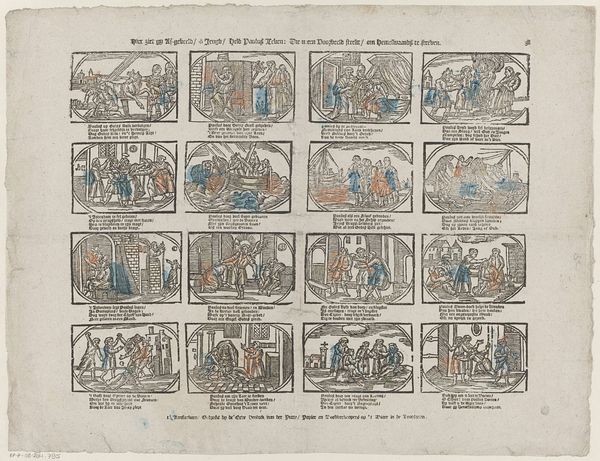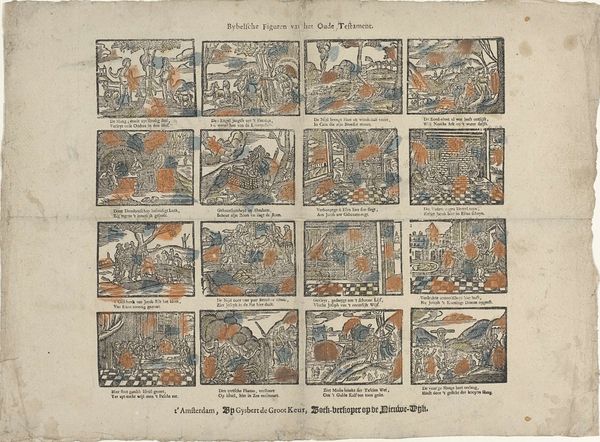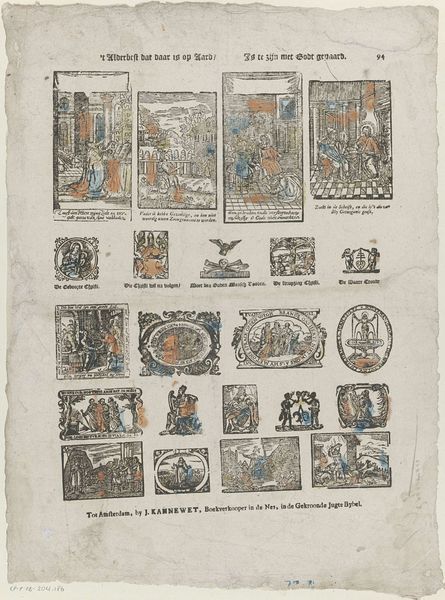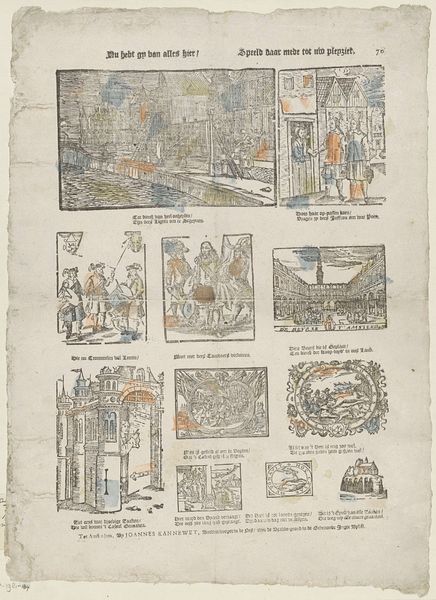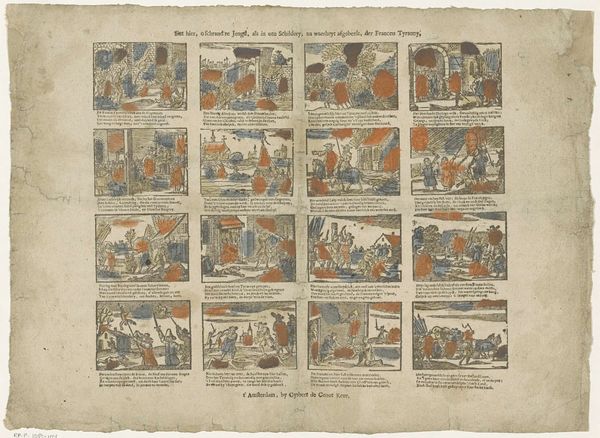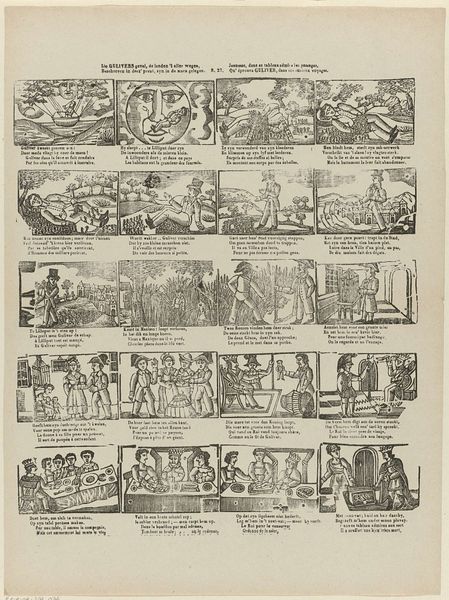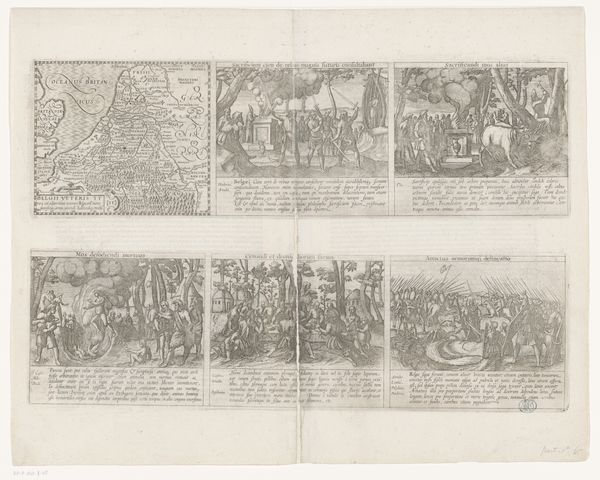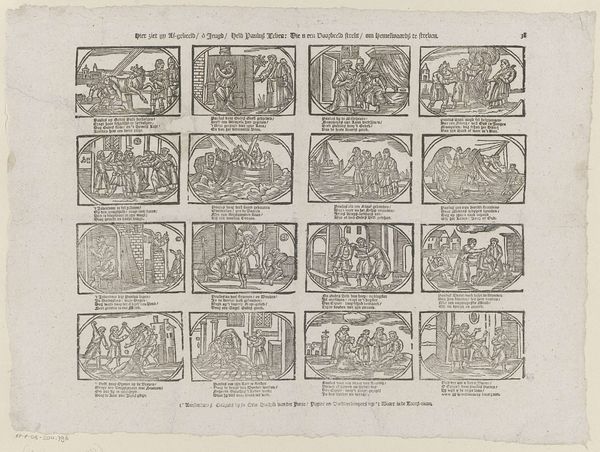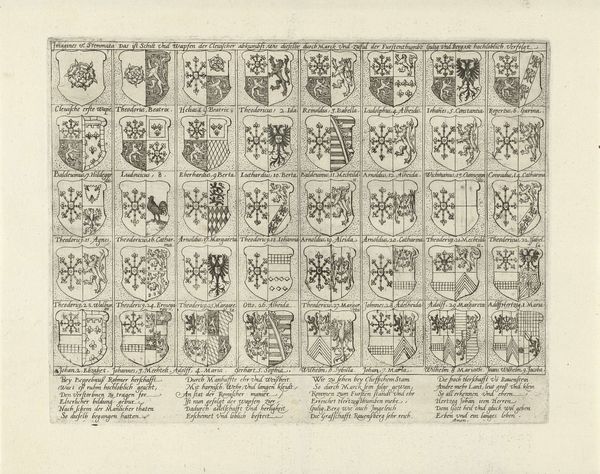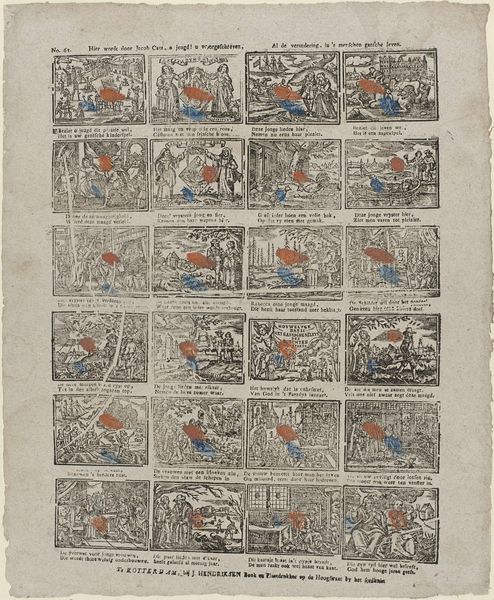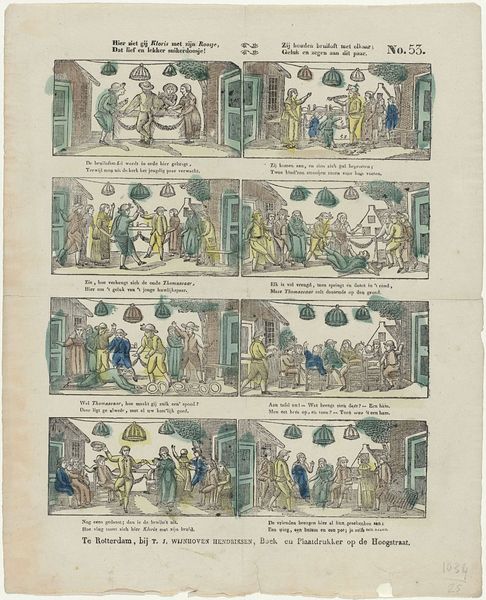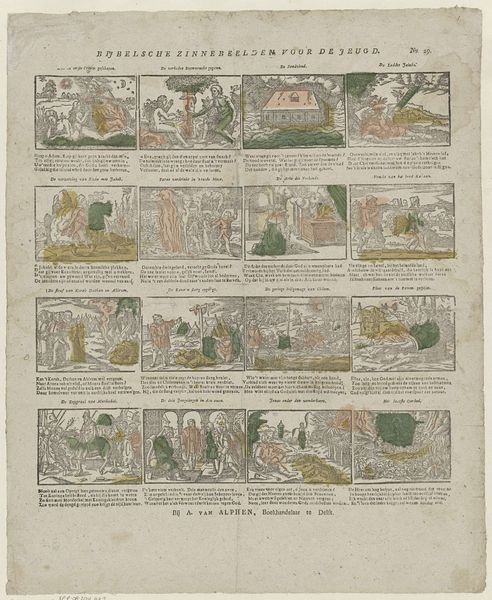
Tweede afbeelding van eenige der voornaamste gebeurtenissen van het Huis van Oranje 1761 - 1804
0:00
0:00
Dimensions: height 317 mm, width 432 mm
Copyright: Rijks Museum: Open Domain
Editor: Here we have "Tweede afbeelding van eenige der voornaamste gebeurtenissen van het Huis van Oranje," a print made sometime between 1761 and 1804. It's a baroque engraving showcasing scenes from the House of Orange. It’s quite a busy composition. I’m curious, how would you interpret the social relevance of such imagery back then? Curator: This print is fascinating precisely because it served a public function. Engravings like these circulated widely, disseminating narratives about the House of Orange and shaping public opinion. Think of them as early forms of political propaganda. How do you see the choice of scenes contributing to the image-making of the Dutch ruling family? Editor: I see what you mean! Each scene, like the installation of Prince Willem den Vijfde and his marriage, seem carefully selected to highlight the grandeur and legitimacy of the House of Orange. Were these prints targeted at a specific social class? Curator: Excellent question. While affordable enough for a growing middle class, the imagery also served to reinforce existing power structures. Notice the formality of the compositions, the emphasis on ceremony. These visual cues were understood by all social classes, solidifying the House of Orange's position. What does this suggest to you about the broader role of art in 18th-century Dutch society? Editor: It suggests art wasn’t just decorative, it was actively involved in shaping and maintaining the social order. These prints normalized and celebrated the ruling family, integrating them into the everyday visual culture. Curator: Precisely. And the printer, Erven de Weduwe Jacobus van Egmont, also played a role. They were influential in distributing the work throughout Amsterdam and beyond. By reproducing and selling these images, this printing house solidified a socio-political perspective, and also generated profit in the process. Editor: That’s really insightful. I had just looked at this print as a historical record, not as a form of social commentary actively shaping its context. It definitely changed my perception of the power and responsibility of art in society.
Comments
No comments
Be the first to comment and join the conversation on the ultimate creative platform.
